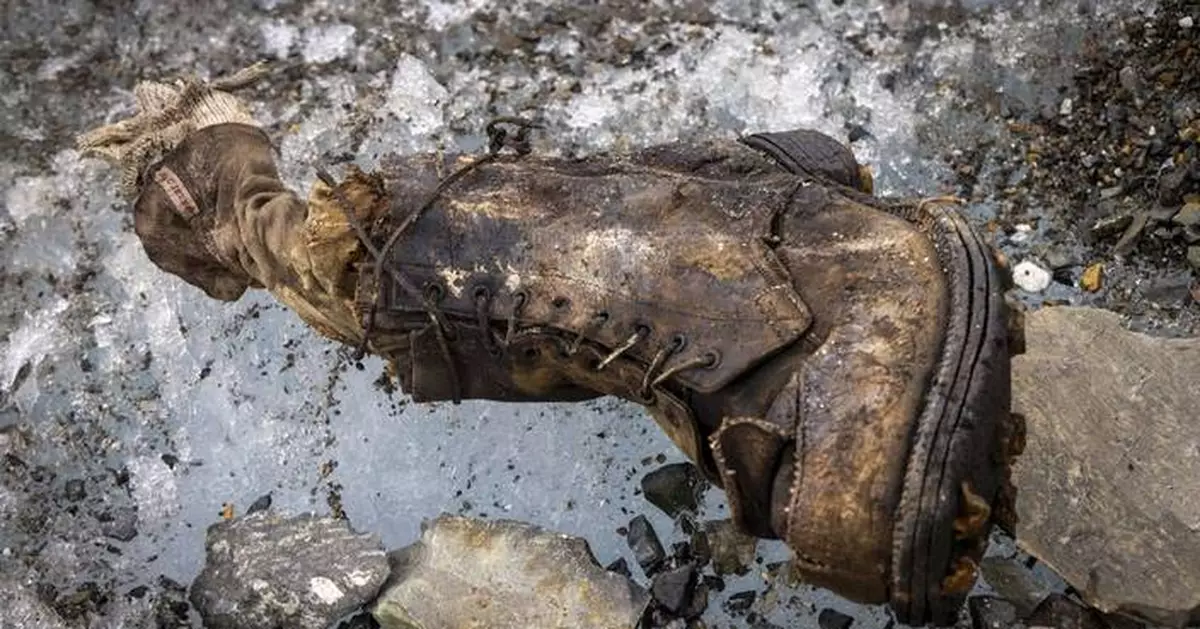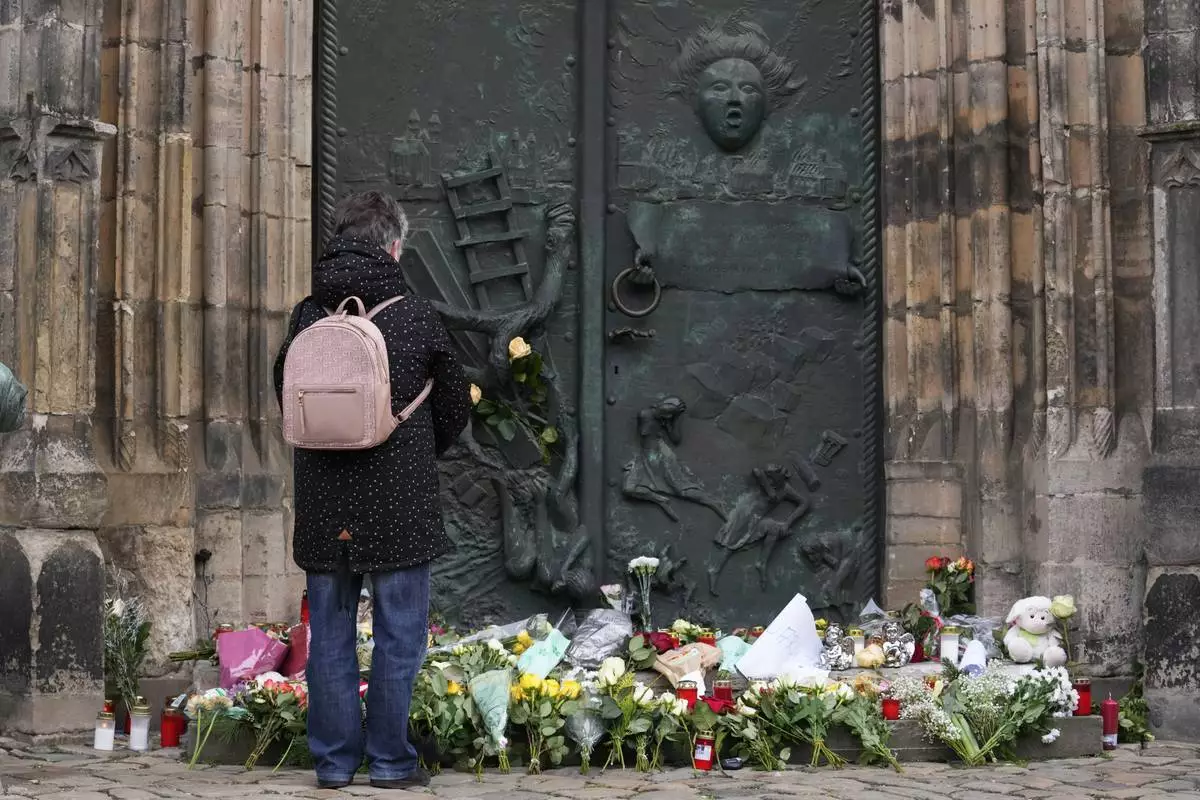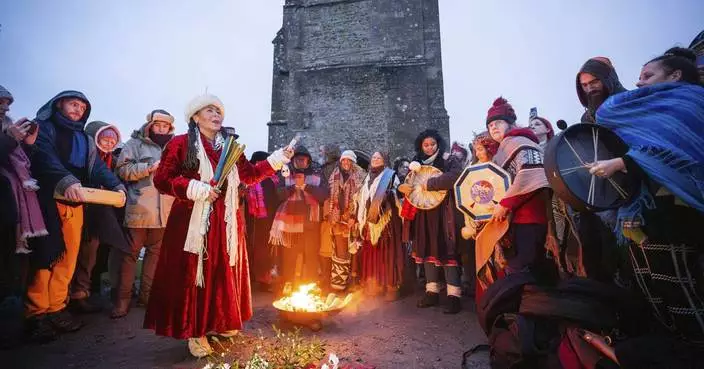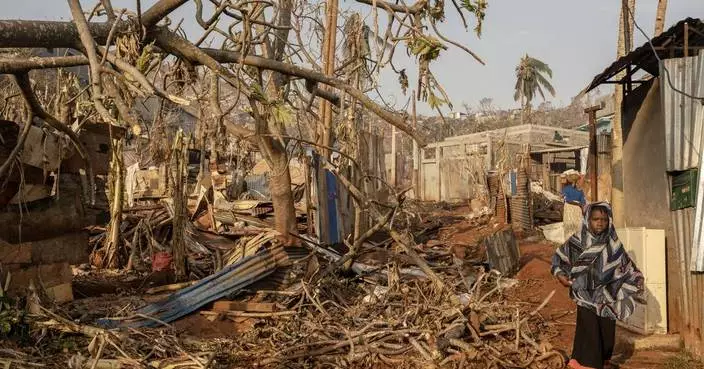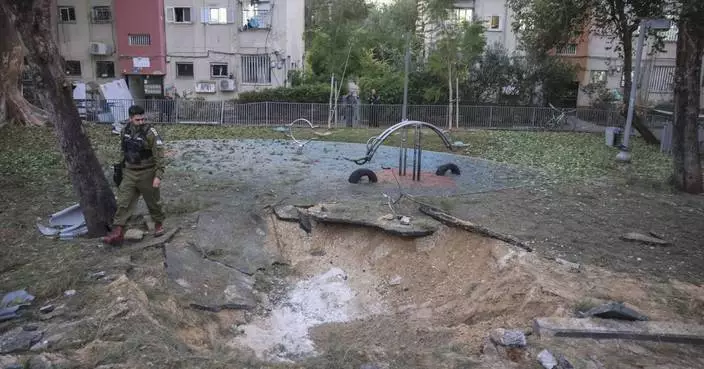LONDON (AP) — Climbers believe they have found the partial remains of a British mountaineer who might — or might not — have been one of the first two people to climb Mount Everest, a century after their attempt on the world's highest peak, according to an expedition led by National Geographic.
Ahead of the release of a documentary film, the television channel said Friday that the expedition found a foot encased in a sock embroidered with “AC Irvine" and a boot that could be that of Andrew “Sandy” Irvine, who disappeared at the age of 22 along with his co-climber, the legendary George Mallory, near Everest's peak on June 8, 1924.
The pair, who were seeking to become the first people to conquer Everest, were last seen around 800 feet (245 meters) from the summit. Their fate has been debated by climbers and historians alike, with some postulating that they had stood atop of the world before disappearing on the way down.
In his final letter to his wife, Ruth, before he vanished on Mount Everest a century ago, the 37-year-old Mallory, who once famously said he wanted to conquer Everest “because it’s there," tried to ease her worries even as he said his chances of reaching the world’s highest peak were “50 to 1 against us.”
Mallory's body was found in 1999 but there was no evidence that could point to the two having reached Everest's summit at 29,032 feet (8,849 meters).
There is still no such evidence, though the apparent discovery of Irvine's remains could narrow the search for a Kodak Vest Pocket camera lent to the climbers by expedition member Howard Somervell. For mountaineers, it's the equivalent of the Holy Grail — the possibility of photographic proof that the two did reach the summit, almost three decades before New Zealander Edmund Hillary and Nepalese Sherpa Tenzing Norgay got there on May, 29, 1953.
The sock and boot were found at a lower altitude than Mallory’s remains, on the Central Rongbuk Glacier below the North Face of Mount Everest.
“This was a monumental and emotional moment for us and our entire team on the ground, and we just hope this can finally bring peace of mind to his relatives and the climbing world at large," said climb team member and National Geographic explorer Jimmy Chin.
Chin did not say exactly where the remains were found because he wants to discourage trophy hunters. But he’s confident that other items — and maybe even the camera — are nearby.
“It certainly reduces the search area," he told National Geographic.
The Irvine family has volunteered to compare DNA test results with the remains to confirm his identity.
His great-niece and biographer, Julie Summers, said she reacted emotionally when she found out about the discovery.
“I have lived with this story since I was a 7-year-old when my father told us about the mystery of Uncle Sandy on Everest,” she said. “When Jimmy told me that he saw the name AC Irvine on the label on the sock inside the boot, I found myself moved to tears. It was and will remain an extraordinary and poignant moment.”
The find, made by Chin along with climbers and filmmakers Erich Roepke and Mark Fisher, was reported to the London-based Royal Geographical Society, which jointly organized Mallory and Irvine’s expedition along with the Alpine Club.
“As joint organizer of the 1924 Everest expedition, the society deeply appreciates the respect Jimmy Chin’s team has shown Sandy Irvine’s remains and their sensitivity toward Sandy’s family members and others connected to that expedition," said Joe Smith, director of the society.
The partial remains are now in the possession of the China Tibet Mountaineering Association, which is responsible for climbing permits on Everest’s northern side.
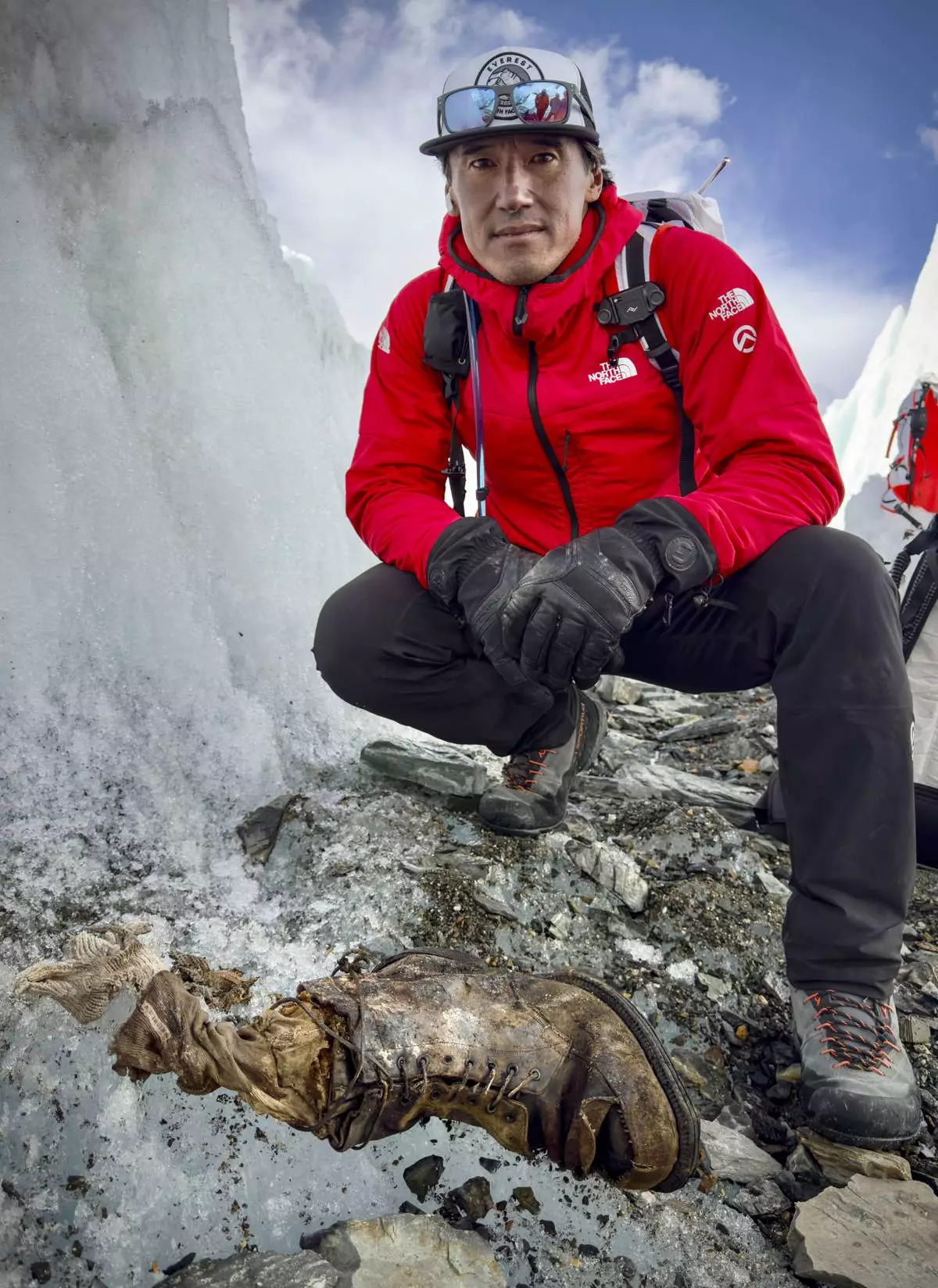
In this photo provided by National Geographic on Friday, Oct. 11, 2024, a view of a sock embroidered with "A.C. Irvine", along with a boot, discovered on the Central Rongbuk Glacier below the North Face of Mount Everest by a team led by Jimmy Chin. (Jimmy Chin/National Geographic via AP)
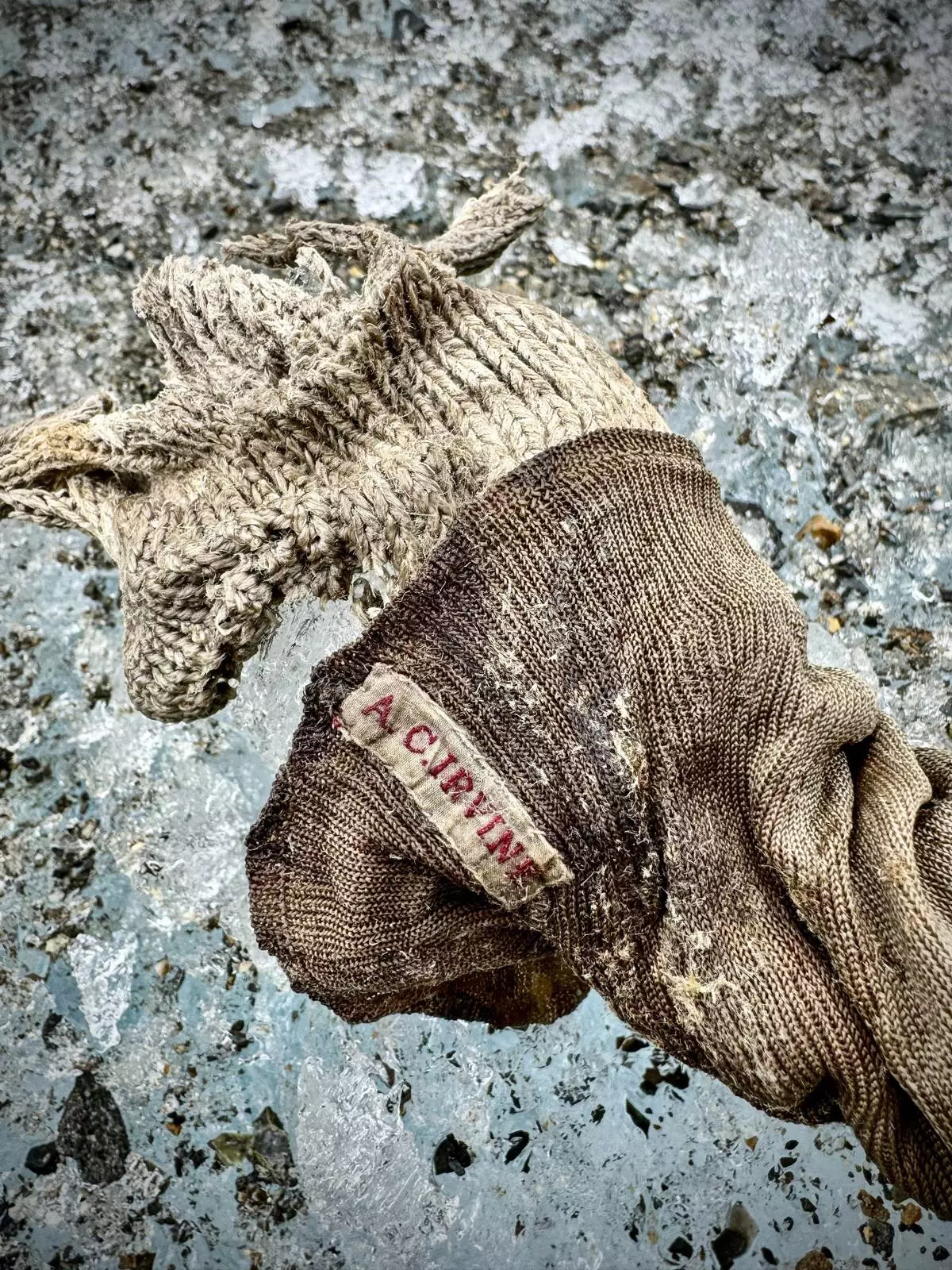
In this photo provided by National Geographic on Friday, Oct. 11, 2024, a sock embroidered with "A.C. Irvine", along with a boot, discovered on the Central Rongbuk Glacier below the North Face of Mount Everest by a team led by Jimmy Chin. (Jimmy Chin/National Geographic via AP)

In this photo provided by National Geographic on Friday, Oct. 11, 2024, a view of a sock embroidered with "A.C. Irvine", along with a boot, discovered on the Central Rongbuk Glacier below the North Face of Mount Everest by a team led by Jimmy Chin. (Jimmy Chin/National Geographic via AP)


